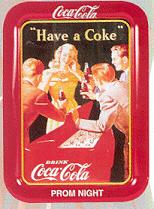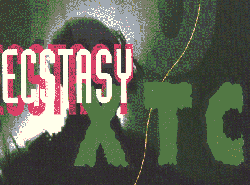Part 3: Cocaine
VIDEO: Watch " Hooked: Illegal Drugs and How They Got That Way: Cocaine. " below.
History in Brief: Cocaine is derived from the South American coca leaf. This leaf has been used traditionally by the local populace. Sucking on a few leaves provides locals with an effect similar to having strong coffee. In the 1860s German scientists find the active ingredient in the coca leaf and name it cocaine. Three years later cocaine comes to the USA in wine and other products. People do not know what cocaine is but they buy more products with it. The most famous product containing cocaine was Coca-Cola.
1860s German scientists find the active ingredient in the coca leaf and name it cocaine. Three years later cocaine comes to the USA in wine and other products. People do not know what cocaine is but they buy more products with it. The most famous product containing cocaine was Coca-Cola.
Sigmund Feud used and prescribed cocaine (though he later became addicted and stopped using it). Cocaine was also given to African-American workers to enable them to work longer hours. The first laws against cocaine appear in southern states when police report that African-American men who use cocaine take more bullets to stop than normal men. It became widely publicized that African-American violence towards whites was caused by cocaine (the biggest fear was that it motivated the rape of white women). As a result southern states banned cocaine and then put cocaine on the list of drugs regulated in 1914 which eventually became illegal in 1970. By and during the 1980's, cocaine was the most popular drug in America .
LSD
History in Brief: LSD was created during World War I but was not produced on a wide scale until the Cold War began at the end of World War II. The CIA widely experimented with LSD using it both on agents and civilians (usually without their consent) in an attempt to determine LSD's effectiveness for mind control, brainwashing, and interrogation purposes. In one of the more public instances, CIA-funded researchers would pay college students to take LSD and undergo mock interrogations and reprogramming experiments. During the 1960s Timothy Leary among others advocated using LSD to expand your minds (he is famous for his book Turn On, Tune In, Drop Out ). At the time LSD was not used by other drug users (cocaine and heroin users) but was embraced by baby boomers in great numbers during the 1960s. The drug was legal during this time but its association with anti-war protestors and hippies helped motivate its ban in 1970.
Science in Brief
- LSD may have uses in psychotherapy.
- LSD likely has negative effects on brain for long-term users.
- LSD is non-addictive.
Ecstasy (XTC)
History and Science in Brief: XTC was first manufactured and used in marriage counseling on the west coast of  the U.S. in the 1970s. XTC creates feelings of closeness that aided couples in therapy. Soon after this use, bars in the southwest begin selling it. XTC is potentially lethal as it causes a large release of seratonin in the brain which leads to "down" days afterwards. XTC use is also linked to deaths from dehydration and heat exhaustion (usually as part of the "rave" scene). As XTC appeared after the 1970 Controlled Substances Act, it was the first drug that was left to the classification system set up by that act. Early in the 1980s XTC was classified as a Schedule I substance which ended all medical research on the drug. XTC went on to become a widely used drug in the rave scene since the 1990s.
the U.S. in the 1970s. XTC creates feelings of closeness that aided couples in therapy. Soon after this use, bars in the southwest begin selling it. XTC is potentially lethal as it causes a large release of seratonin in the brain which leads to "down" days afterwards. XTC use is also linked to deaths from dehydration and heat exhaustion (usually as part of the "rave" scene). As XTC appeared after the 1970 Controlled Substances Act, it was the first drug that was left to the classification system set up by that act. Early in the 1980s XTC was classified as a Schedule I substance which ended all medical research on the drug. XTC went on to become a widely used drug in the rave scene since the 1990s.